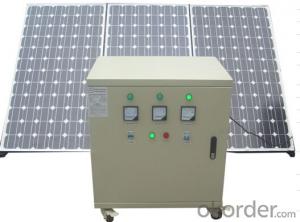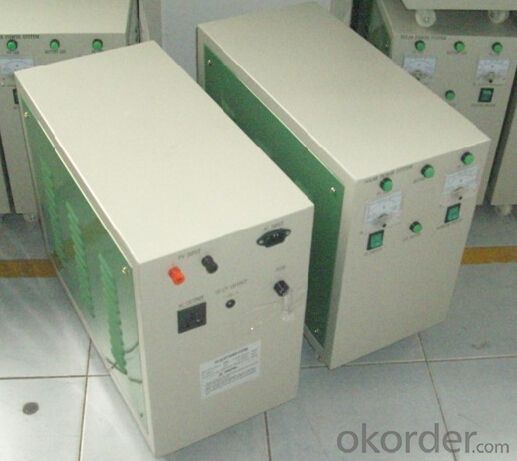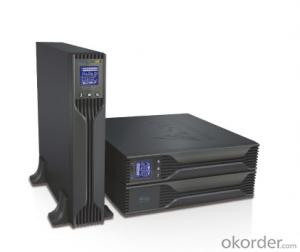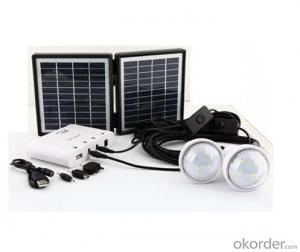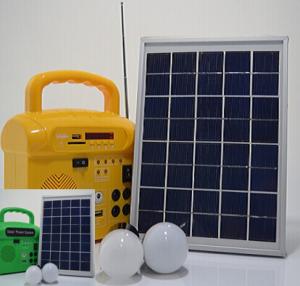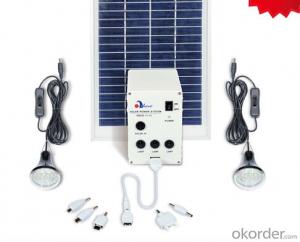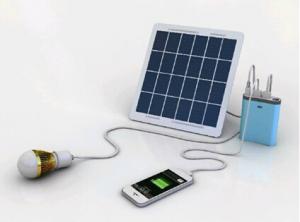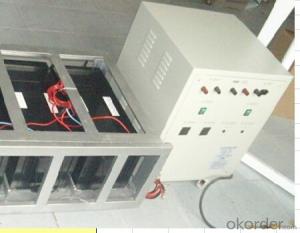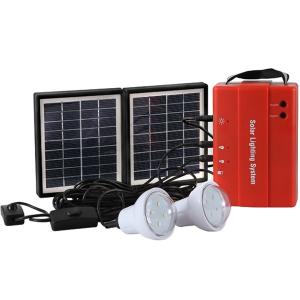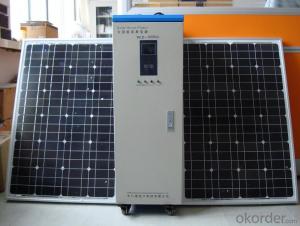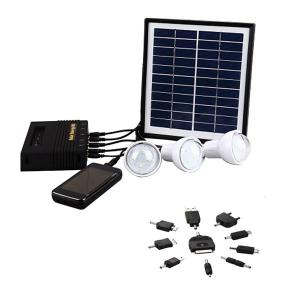Baywa Re Solar Energy Systems CNBM Solar Home System Roof System Capacity-1000W
- Loading Port:
- Shanghai
- Payment Terms:
- TT or LC
- Min Order Qty:
- 5 pc
- Supply Capability:
- 30000 pc/month
OKorder Service Pledge
OKorder Financial Service
You Might Also Like
Introduction of Solar Home System
Solar Home System is composed by Solar Panels, Inverters, Charger Controller, Battery, Cable, Mounting Bracket, which is applied to produce electricity for home use.
Solar Home System is quite suitable product in urban area and the place which is short of electricity. Our Small Solar Home System own great benifits compare with other kind electricity resources:
Electricity generating cost of Solar Home System is much cheaper than diesel engine. Beside low electricity making cost, solar system products also have the features of noiseless, clean energy, environmentally friendly and can access to many different electric appliance.
Picture of Our Factory

Working Principle of Solar Home System
The stand alone Solar Home System is an off-grid solar system which uses batteries to store the solar energy. Stand alone solar system solutions design for those who are not able or willing to connect to electricity grid.
However, our on-grid solar home system can be connected to the grid for utilization of grid electricity power. Our solar system can add relative equipment as our customer’s requirement which have the function of switching to city electricity automatically. The solar system can use battery power in priority, if sunshine is not so good or loads consumption is too high which cause battery power insufficient. Then system can switch automatically to grid power supply. Meanwhile, the system can charge the batteries with grid power until batteries are fully charged. Then the solar system will switch back to battery power supply.
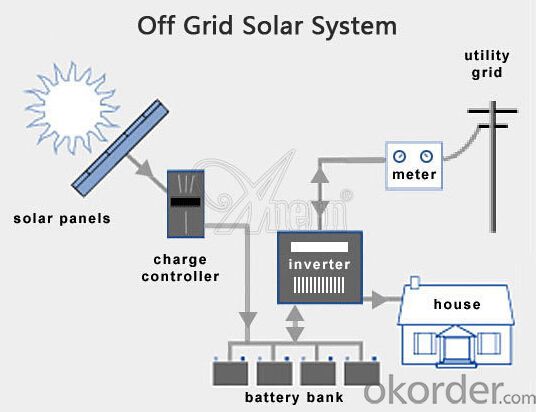
Product Details of Solar Home System
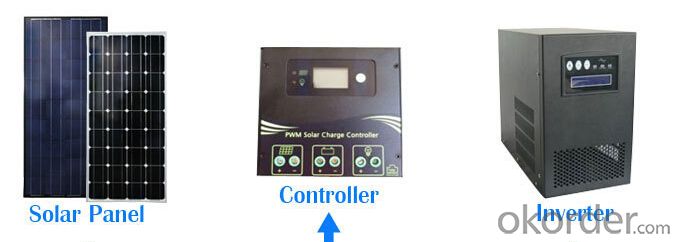
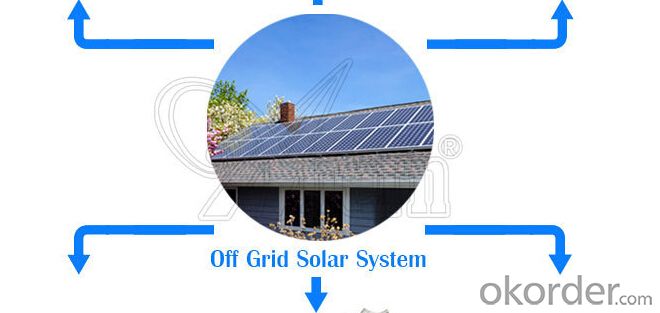

Specification of Solar Home System
Technical data: | ||||||||
Inverter | Rated load power | 1500W | ||||||
Output wave | Pure sine wave | |||||||
Input voltage | 24V | |||||||
Output voltage | DC:12V | |||||||
Output frequency | 50HZ/60HZ | |||||||
Precision of output frequency | ±6% | |||||||
Solar panel | Pmax | 167W*6PCS | ||||||
Vmp | 36V | |||||||
Imp | 27.8A | |||||||
Charger | Charger voltage & current | 24V/20A*3 | ||||||
Battery | Capacity | 12V/150AH*4PCS | ||||||
Power box | Spray paint iron box,with input,output, ammeter,voltmeter,master switch and so on. | |||||||
Package data: | ||||||||
Part | Size (L*W*H mm) | Weight (kg) | 20' (pcs) | 40' (pcs) | ||||
Power box | 580*520*540 | 60 | 96Sets | 240Sets | ||||
Solar panel | 1600*830*90 | 90 | ||||||
Battery | 540*520*350 | 220 | ||||||
Loading electrical equipment(For Consulting) | ||||||||
Name of Load | Power(W) | Quantity | Working Time per Day (H) | Working Days | ||||
Color TV | 65W | 1 | 6 | 3 days | ||||
Satellite TV Receivers | 25W | 1 | 6 | 3 days | ||||
lamp | 11W | 8 | 8 | 3 days | ||||
Computer | 150W | 2 | 6 | 3 days | ||||
FAN | 60W | 2 | 6 | 3 days | ||||
Other | 100W | 1 | 4 | 3 days | ||||
Advantage of Our Solar Home System
1 Excellent Performance: Our Solar Home System is composed by Brand Standard Kits with high quality. Our solar system has the advantage of high efficiency and stable operation. We can ensure our product with a long life period.
2. Small Orders Accepted: We can accept small orders as our customer’s trial order.
3. Warehouse: We have warehouse overseas which can bring great convenience to our customer to pick up the products.
FAQ
Q: Could you introduce the background of your company?
A: We are a Group corp. with 1GW capacity in China, which is Okorder’s registered VIP Supplier, possess Financial Service from Okorder.com.
Q: Required mainly certificates (CE&IEC/TUV/RoHS)?
A: Our products are certificated by CE RoHS, IEC, ISO, TUV, UL etc.
Q: Your main exported market is?
A: Main markets of our products is: South-east Asia, Mid-east, Arica, East Europe and Latin America.
- Q: Can solar energy systems be used in areas with limited access to solar energy consultants?
- Yes, solar energy systems can still be used in areas with limited access to solar energy consultants. While the guidance of a consultant can be helpful in designing and implementing an efficient solar energy system, there are plenty of resources available online, including step-by-step guides, tutorials, and calculators, that can assist individuals in setting up their own solar energy systems. Additionally, many solar equipment manufacturers provide technical support and assistance to customers even in remote areas. With the right research, resources, and support, individuals can successfully install and maintain solar energy systems without direct access to consultants.
- Q: How does the location of a solar energy system affect its performance?
- The performance of a solar energy system is significantly influenced by its location, with various factors playing a pivotal role in determining its efficiency and effectiveness. To begin with, the latitude of the location directly affects the amount of solar radiation received. Areas closer to the equator enjoy a greater amount of direct sunlight throughout the year, resulting in higher solar energy production. Conversely, regions situated farther away from the equator receive less direct sunlight, leading to potentially lower solar energy generation. Moreover, the climate of a location also impacts the performance of a solar energy system. Regions characterized by clear skies and abundant sunshine tend to possess a higher solar energy potential compared to areas that experience frequent cloud cover or a greater number of rainy days. Additionally, extreme temperatures can affect the efficiency of solar panels, as excessive heat can diminish their output efficiency. The presence of shading is another critical factor to consider when installing a solar energy system. Shadows cast by nearby buildings, trees, or other obstructions can significantly reduce the amount of sunlight reaching the solar panels. Even partial shading on a small portion of the panels can disproportionately impact the overall performance of the system, resulting in reduced energy production. Furthermore, the orientation of the solar panels is also a crucial consideration. Ideally, solar panels should face south in the Northern Hemisphere and north in the Southern Hemisphere to receive the maximum amount of sunlight throughout the day. However, even deviations from this optimal orientation can still yield efficient results, albeit with slightly reduced performance. In conclusion, the performance of a solar energy system is directly influenced by its location. Latitude, climate, shading, and orientation all play vital roles in determining the efficiency and effectiveness of solar energy production. It is imperative to take these factors into account during the planning and installation process to maximize the potential of solar energy systems.
- Q: Can solar energy systems be used in areas with limited space?
- Yes, solar energy systems can be used in areas with limited space. There are various options available such as rooftop solar panels, solar carports, and even solar-powered windows, which can effectively harness solar energy in compact spaces. Additionally, advancements in technology have led to the development of smaller and more efficient solar panels, allowing for installation in areas with limited surface area.
- Q: Can a solar energy system be installed in a desert environment?
- Solar energy systems can indeed be installed in desert environments. In fact, deserts are considered optimal for solar energy installations due to their ample sunlight and minimal cloud cover. The abundance of solar radiation in deserts makes them exceptionally efficient for generating electricity with solar panels. Additionally, the vast open spaces in deserts offer plenty of land for large-scale solar power plants. Moreover, the arid conditions in deserts contribute to the longevity and durability of solar panels, as they are less susceptible to damage from moisture or extreme weather conditions. All in all, the combination of wide open spaces, high solar radiation, and dry climate render deserts an ideal setting for installing solar energy systems.
- Q: Can solar energy systems be used in areas with limited access to information technology?
- Yes, solar energy systems can be used in areas with limited access to information technology. Solar energy systems primarily function using photovoltaic cells that convert sunlight into electricity, which does not require frequent monitoring or maintenance. These systems can be installed and operated without the need for complex information technology infrastructure. Therefore, even in remote or underdeveloped areas with limited access to information technology, solar energy systems can still be effectively utilized to provide sustainable and reliable power.
- Q: Can solar energy systems be used in areas with high levels of bird activity?
- Yes, solar energy systems can be used in areas with high levels of bird activity. However, it is important to take certain precautions to ensure the safety of the birds and the optimal functioning of the solar panels. One common concern is the potential for bird collisions with the panels. To mitigate this, manufacturers often incorporate bird deterrents such as mesh screens or reflective coatings on the panels to make them more visible to birds and reduce the risk of collisions. Additionally, proper installation and maintenance of the solar energy systems can help minimize potential nesting or roosting sites for birds, reducing the likelihood of damage to the panels. By addressing these considerations, solar energy systems can be effectively utilized in areas with high bird activity while still protecting the local avian population.
- Q: Can solar energy systems be used in areas with high levels of vandalism or theft?
- Solar energy systems can certainly be used in areas with high levels of vandalism or theft. However, precautionary measures such as installing security cameras, using tamper-proof mounting systems, and implementing proper fencing can help deter potential thieves or vandals. Additionally, community engagement and education about the benefits of solar energy may also help in reducing such incidents.
- Q: Are there any ongoing monitoring requirements for solar energy systems?
- Yes, there are ongoing monitoring requirements for solar energy systems. Monitoring is essential to ensure that the solar energy system is operating efficiently and effectively. It helps in identifying any potential issues or malfunctions, allowing for timely repairs or maintenance. Ongoing monitoring typically involves tracking the system's performance, including energy production, system uptime, and any deviations from expected outputs. This can be done through various monitoring tools and technologies, such as real-time monitoring software, data loggers, or remote monitoring systems. Additionally, some jurisdictions or incentive programs may have specific monitoring requirements to ensure compliance with regulations or eligibility criteria. Regular monitoring helps maximize the benefits of solar energy systems and ensures their long-term performance and durability.
- Q: Can solar energy systems be used in areas with protected wildlife habitats?
- Yes, solar energy systems can be used in areas with protected wildlife habitats. In fact, solar energy is considered a more environmentally friendly and sustainable alternative to traditional energy sources, making it compatible with wildlife preservation efforts. By utilizing solar power, we can minimize the impact on ecosystems and reduce habitat destruction associated with conventional energy generation methods.
- Q: Can solar energy systems be used to power electric vehicles?
- Yes, solar energy systems can be used to power electric vehicles. Solar panels can be installed on the roof of a vehicle or in a stationary location to capture sunlight and convert it into electricity. This electricity can then be used to charge the batteries of electric vehicles, providing a clean and renewable source of energy for transportation.
Send your message to us
Baywa Re Solar Energy Systems CNBM Solar Home System Roof System Capacity-1000W
- Loading Port:
- Shanghai
- Payment Terms:
- TT or LC
- Min Order Qty:
- 5 pc
- Supply Capability:
- 30000 pc/month
OKorder Service Pledge
OKorder Financial Service
Similar products
Hot products
Hot Searches
Related keywords
